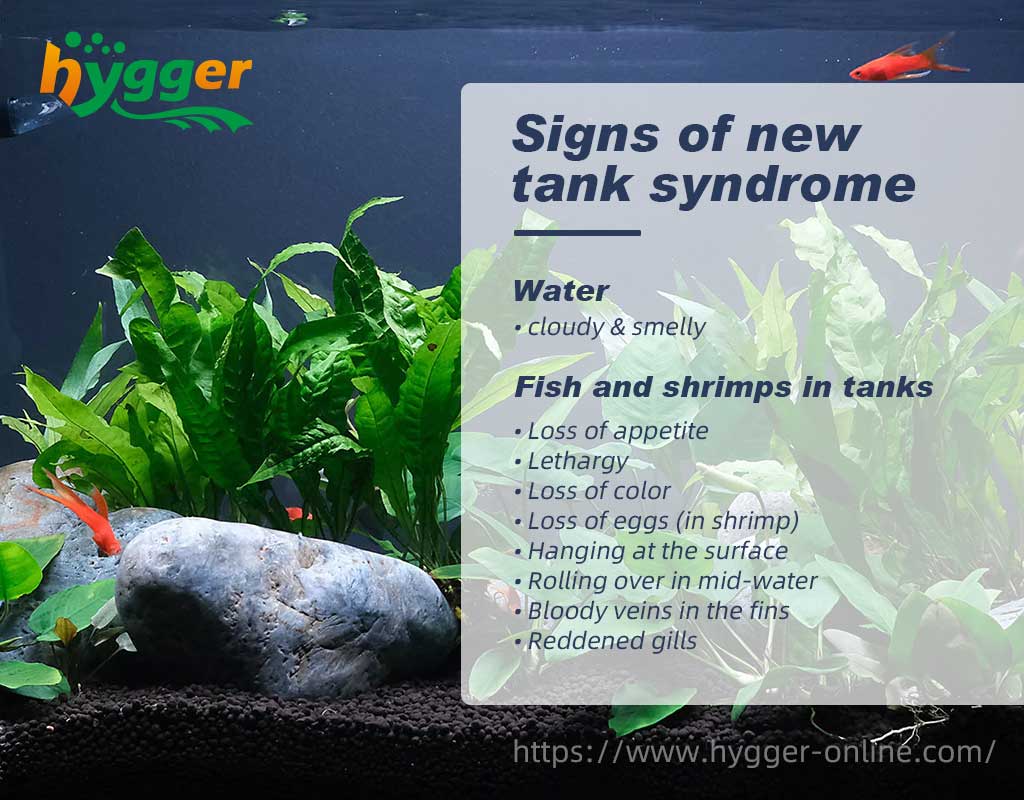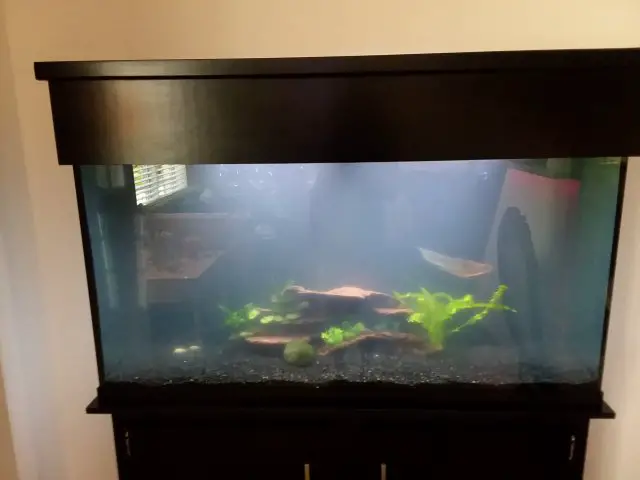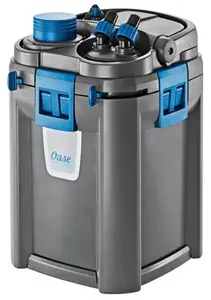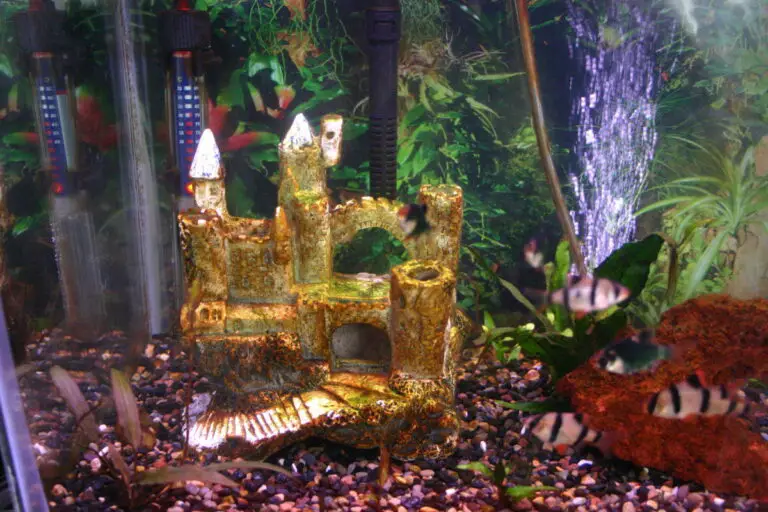How Long Does New Tank Syndrome Last?
New Tank Syndrome (NTS) typically last for about 1-2 weeks. NTS is caused by the lack of beneficial bacteria in newly set up aquariums, which makes it difficult to break down fish waste and other organic matter. During this period, ammonia levels can spike causing stress and even death to fish living in the tank.
To reduce the effects of NTS, use a water conditioner when adding new water to the tank and add some bacteria starter products such as Bio-Spira or Tetra SafeStart to help establish colonies of beneficial bacteria more quickly. Additionally, performing regular partial water changes during this time can also help reduce ammonia levels as well as remove any uneaten food particles and other debris that may be present before introducing your fish into the environment.
New Tank Syndrome, also known as “start up syndrome,” is a common occurrence in new aquariums. It typically occurs within the first few weeks of setting up a tank and can last anywhere from one week to several months depending on the size and complexity of the tank. During this time, ammonia and nitrite levels will be high due to the lack of beneficial bacteria needed to process them.
Regular water changes are key during this period to keep these toxins at bay until enough bacteria populations grow in order for them to cycle out naturally. With proper maintenance, New Tank Syndrome should not last too long before your aquarium can start running smoothly!

Credit: www.hygger-online.com
How Do You Reverse New Tank Syndrome?
Reversing New Tank Syndrome (NTS) is an important part of setting up a successful tank. NTS is caused by the presence of harmful substances in new tanks, such as ammonia and nitrite, which can be very toxic to fish. The best way to prevent this from occurring is by establishing a beneficial bacteria colony in your aquarium.
This beneficial bacteria colony will convert these harmful substances into less hazardous forms that are safe for your fish to live in. To establish this beneficial bacteria colony, you should cycle your tank with appropriate levels of nitrogen-rich materials like fish food or rotting plants. Additionally, regular water changes and proper filtration will also help maintain healthy water parameters and keep the levels of toxins at bay.
Once these steps are taken, it’s important to monitor the water quality regularly and make sure that all necessary precautions have been taken before adding any new inhabitants into the aquarium. Taking these steps helps ensure a healthier environment for both you and your aquatic life!
What are the Signs of New Tank Syndrome?
New tank syndrome is a common problem among new fish keepers. It occurs when an aquarium has been recently set up and the water chemistry is not yet stable. The most tell-tale signs of new tank syndrome are cloudy or discolored water, excessive algae growth, and fish that seem to be gasping for air at the surface of the tank.
This can be caused by too many organic wastes in the aquarium due to overfeeding or overcrowding; bacteria blooms that cause oxygen levels to drop; and pH shocks from rapid changes in acidic or alkaline levels which can make it difficult for your fish to breathe normally. To prevent new tank syndrome from occurring, you should cycle your aquarium before adding any fish with a biological filter like live rocks, plants, or beneficial bacteria cultures so that ammonia and nitrite levels remain low while nitrate levels rise gradually as part of normal process. Additionally, make sure to monitor your water parameters regularly and perform regular partial water changes with dechlorinated tap water in order to maintain healthy living conditions for your aquatic inhabitants.
How Long Does It Take a New Tank to Settle?
The process of settling a new tank for fish can take anywhere from several weeks to several months, depending on the size and complexity of the tank. The main goal is to create an environment that is safe and comfortable for your fish by allowing beneficial bacteria to colonize in the filter, gravel, rocks, substrate—or any other hiding places within the aquarium. Take time during this process to ensure that all equipment (filter systems, pumps etc) are working correctly and monitor water parameters such as pH levels regularly.
In order for your tank to settle properly you will need to go through a few steps such as cycling or establishing a bio-filter before adding any fish into it. Cycling means introducing ammonia into your tank so that nitrifying bacteria can begin growing; these bacteria convert toxic ammonia into less harmful substances like nitrates which help keep your fish healthy. During this period check water quality daily with test kits and analyze results until they become stable; typically this takes between 2-6 weeks but could be longer if there are large changes made after cycling begins – adding more than one kind of livestock or too much food at once could disrupt the balance so make sure you do it gradually!
Finally add only hardy species such as mollies or guppies since sensitive ones may not survive long enough in an unestablished ecosystem.Once everything has settled down in terms of water chemistry and bacterial growth then you can start slowly introducing more delicate species over time while monitoring their health closely throughout each addition – patience pays off here! With correct maintenance procedures including regular partial water changes (around 10%-30% weekly), cleaning debris out of filters/gravel beds occasionally plus feeding appropriately sized amounts twice per day; eventually your new tank should reach its full potential where everyone inside is happy and thriving together peacefully!
How Long Does It Take for Bacterial Bloom to Clear in a New Tank?
The time it takes for bacteria bloom to clear in a new aquarium can vary greatly depending on the size of the tank, water conditions, and other factors. Generally speaking, however, most tanks will take about four weeks for bacterial bloom to fully clear. During this period of time you may notice cloudy water or small particles floating around in your tank; this is simply due to the growth and activity of beneficial nitrifying bacteria which are working to establish themselves in your system.
To help speed up the process, make sure that you have adequate filtration and aeration as these will ensure that your tank has enough oxygen for the bacteria to thrive. Additionally, regular partial water changes should be done during this period; doing so helps remove any built-up organic waste material from the system which can slow down bacterial growth if left unchecked. Allowing ample time (at least four weeks) for your bacterial population to become established is key when setting up a new aquarium; by allowing them plenty of opportunity to grow and bloom before adding fish or other animals into your tank you’ll give yourself a headstart towards success!
NEW TANK SYNDROME ????
How to Avoid New Tank Syndrome
New Tank Syndrome (NTS) is a common issue for new aquarium owners. In order to avoid this problem, it’s important to cycle the tank before adding fish or other animals. This involves introducing beneficial bacteria by using an established filter media from another healthy system and monitoring ammonia, nitrite and nitrate levels in the water over several weeks until they reach acceptable levels.
Additionally, performing regular partial water changes with aged tap water will help maintain a healthy environment in your tank.
New Tank Syndrome Cloudy Water
New tank syndrome, also known as “new aquarium cloudiness,” is a common issue when setting up a new fish tank. This cloudy water is caused by high levels of ammonia, nitrites, and nitrates in the water. The best way to combat this issue is to cycle your aquarium properly before adding any fish or other livestock into it.
During the cycling process, beneficial bacteria will be able to break down these harmful compounds and keep them at acceptable levels for your fish’s health.
Can Fish Survive New Tank Syndrome
New Tank Syndrome is a term used to describe the stress and shock that fish experience when they are first introduced into a new tank. It can often be fatal, as the sudden change in environment puts strain on their bodies, leaving them vulnerable to pathogenic bacteria and other illnesses. Fortunately, with proper acclimation techniques, such as slowly increasing the temperature of the water or introducing small amounts of aquarium salt over time, fish can survive this transition period and live healthy lives in their new home.
How to Fix New Tank Syndrome
New Tank Syndrome is a common problem experienced by new aquarium owners. It occurs when the bacteria and other organisms necessary for a healthy tank have not had time to establish themselves, resulting in high levels of ammonia, nitrite, and nitrate. To fix New Tank Syndrome, it is important to cycle your tank using an established source of beneficial bacteria like an old filter media from another tank or a store-bought product such as Cycle or BioSpira.
Additionally, frequent water changes will help reduce the amount of toxins present in the tank until beneficial bacteria can start breaking them down.
New Tank Syndrome Betta Symptoms
New Tank Syndrome, also known as “Cycling Syndrome,” can cause a variety of symptoms in Betta fish. Symptoms include poor appetite, lethargy, sluggishness or floating at the surface of the tank, discolored or clamped fins and gills, and unexplained deaths due to lack of oxygen within the tank. It is important to cycle new tanks before introducing any fish into them so that they have time to develop beneficial bacteria colonies that reduce ammonia levels.
This will help prevent New Tank Syndrome from occurring.
New Tank Syndrome Axolotl
New Tank Syndrome (NTS) is a condition that affects axolotls and other amphibians when they are placed in a new environment. Symptoms of NTS include stress, lethargy, refusal to feed, and overall poor health. This can be caused by sudden changes in the water quality or temperature of their habitat as well as improper acclimation.
To help prevent NTS from occurring, it is important to slowly introduce your axolotl into its new tank over time and make sure the water parameters are stable before introducing them to their home.
New Tank Syndrome Reddit
New Tank Syndrome Reddit is an online community for aquarium hobbyists to discuss and share information about setting up and maintaining tanks. The subreddit covers a variety of topics, from tank setup techniques, water chemistry, equipment reviews, fish care tips, algae control methods, DIY projects and more. With over 200k members on the subreddit there is no shortage of advice to be found!
Symptoms of New Tank Syndrome
New Tank Syndrome (NTS) is a common problem among fish tank owners and can be identified by several symptoms. These include cloudy water, elevated levels of nitrite, ammonia or phosphates, algal bloom, unhealthy plants and fish death. It is important to test the water regularly for these elements and make necessary adjustments to keep your aquarium healthy.
Additionally, regular partial water changes are essential in helping to prevent NTS from occurring in the first place.
Conclusion
New Tank Syndrome is an unfortunate reality of the aquarium hobby, but with some patience and proper care it can be avoided or minimized. If your tank does experience New Tank Syndrome, it’s important to remember that in most cases it resolves itself within a few weeks or months. With regular water changes and careful monitoring of parameters such as pH, ammonia, nitrite, and nitrate levels you can ensure that your fish stay healthy while your tank stabilizes.
All in all, New Tank Syndrome is simply an unavoidable part of setting up a new freshwater aquarium system; however if properly managed the effects will pass quickly so you can enjoy the beauty of your aquatic environment for many years to come.





